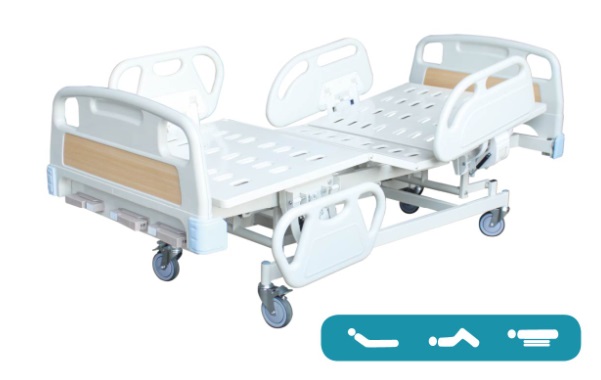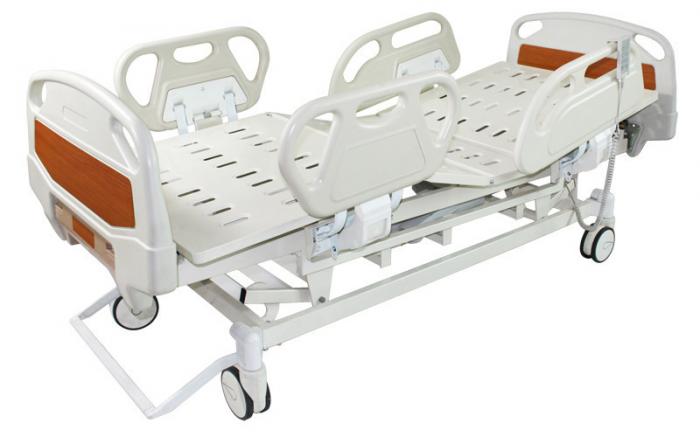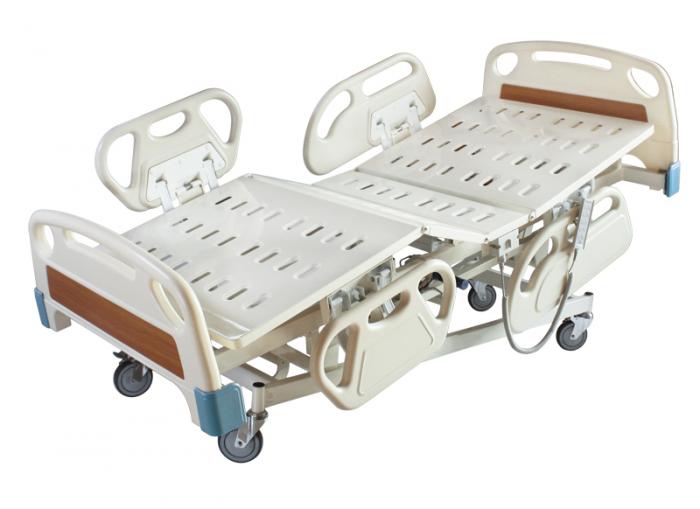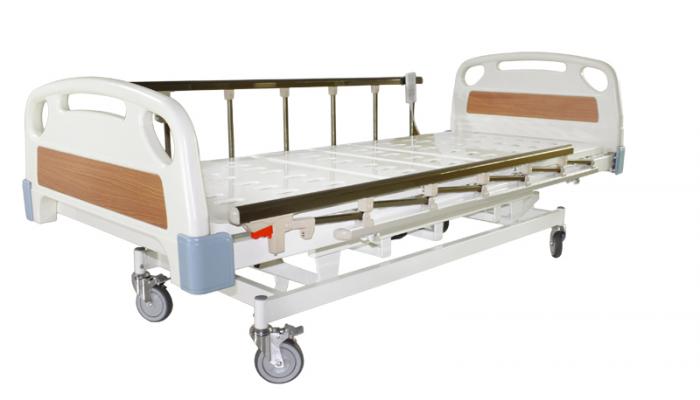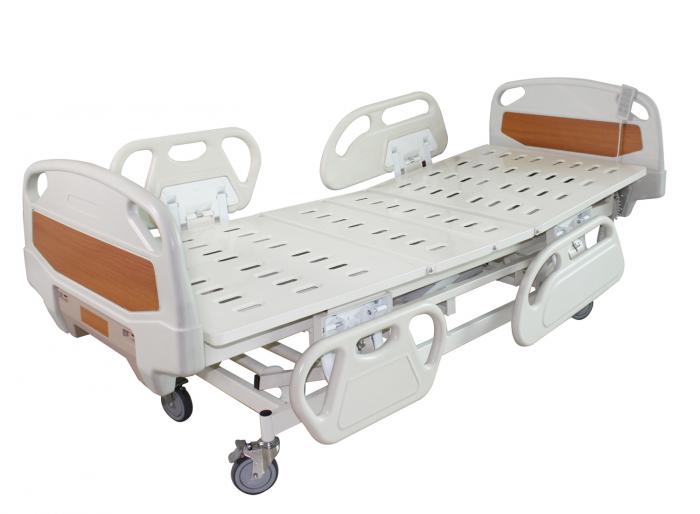| Name: | 3 Cranks Manual Beds |
|---|---|
| Model No.: | BES-HB038 |
| Product Name: | 3 Cranks Manual Bed |
| Brand: | BESCO |
| MOQ: | 20 units |
| Keywords: | 3 Cranks Manual Bed,3-Function Manual Crank Hospital Bed,3 functions Hospital Beds |
| Sample: | Available |
| Lead time: | 25 days |
| Payment Term: | T/T in advance |
| Country of Original: | China |
| Weight Capacity: | 220 kgs |
| Stock: | NO |
| Port: | Jiangmen |
| Office: | Zhengzhou,China |
Products Description
3 Cranks Manual Bed with PE Plastic Side Rails
Function:
Back-rest tilting is 0~80º.Knee-rest tilting is 0~35º.Height adjustment is 450~730mm.
Material:
Detachable ABS bed board,cold-rolled steel bed plate,self-protected crank system.
Standard accessory:
PE plastic side rails,5" castors
Optional:
Two sectional IV pole,mattress,overbed table,central lock system
| Dimension | L2180*W900/990*H450~730mm |
| Material | Steel framework |
| Backrest adjustment angle | 0-80º |
| Leg rest adjustment angle | 0-35º |
| Height adjustment range | 450~730mm |
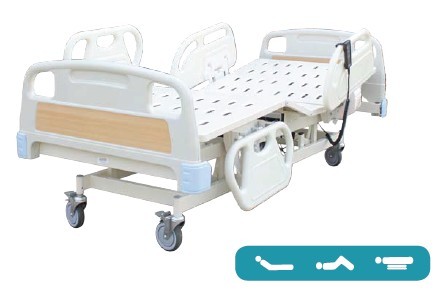
A "3 Cranks Manual Bed" is a hospital-style bed that uses three separate hand cranks to manually adjust the patient's position and the bed's height, offering features for the patient's comfort and care needs, such as adjusting the backrest, the knee section, and the overall bed elevation.
Here's a breakdown of its components and functions:
Manual Operation:
The bed uses hand cranks instead of electric motors, making it a cost-effective and reliable option that doesn't require electricity and avoids potential motor failures.
Three Cranks:
Each crank controls a different function:
Backrest Adjustment: One crank adjusts the angle of the head and upper back section.
Knee/Leg Adjustment: Another crank controls the angle of the leg or foot section.
Height Adjustment: The third crank adjusts the overall height of the bed, which is useful for caregiver ergonomics and patient transfers.
Benefits:
Cost-Effective: It's a more affordable option compared to electric beds.
Durability: Often features a robust steel frame and a durable epoxy coating.
Patient Comfort: Allows for precise positioning to meet a patient's specific comfort and clinical needs.
Caregiver Assistance: Easier for caregivers to position the bed for patient care, feeding, or transfers.
Common Features:
Detachable head and footboards.
Full-length side rails for patient safety.
Durable, heavy-duty frame.
A central locking caster system for stability and mobility.
To use a 3-crank manual bed, insert the appropriate crank into its receptacle and turn it clockwise to raise or counter-clockwise to lower the desired section of the bed: the left crank typically adjusts the backrest, the middle crank adjusts the overall height, and the right crank adjusts the foot/knee section. After use, fold or reattach the crank to the frame.
Before You Start
Locate the Cranks: Identify the three cranks, usually found at the foot of the bed, beneath the footboard.
Identify Function: Note which crank controls which function. Typically, the cranks control the backrest, bed height, and knee/foot section.
Ensure Proper Position: Make sure the bed is on a stable, level surface, and the wheels are locked.
How to Adjust Each Section
To Raise a Section:
Insert the corresponding crank and turn it clockwise (to the right).
To Lower a Section:
Insert the same crank and turn it counter-clockwise (to the left).
Specific Crank Functions (Typical Configuration)
Left Crank:
Adjusts the backrest.
Middle Crank:
Adjusts the overall height of the bed.
Right Crank:
Adjusts the knee or foot section.
After Use
Detach Crank: Once you have adjusted the bed to the desired position, remove the crank.
Store Crank: Store the crank by folding it under the bed or reattaching it to its bracket on the footboard.
Lock Wheels: For safety, ensure the wheels are locked when the bed is not being moved.
Patient Safety: Keep side rails up for patient safety and ensure call buttons and phones are within easy reach.
